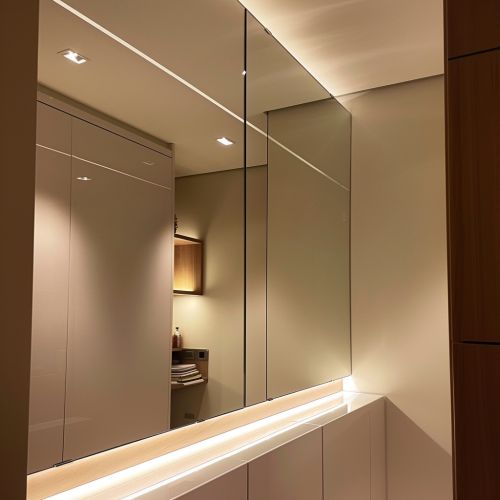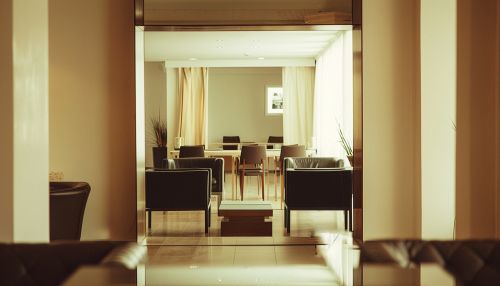Plane mirror
Introduction
A plane mirror, or a flat mirror, is a mirror with a flat reflective surface. Plane mirrors reflect light in a geometrically predictable manner, producing a virtual image that is the same size as the object being reflected. The image is also the same distance behind the mirror as the object is in front of the mirror. This type of mirror is commonly used in a variety of applications, including personal grooming, interior design, and scientific experiments.
Physical Properties
Plane mirrors are characterized by their flat, smooth surfaces. The quality of a plane mirror's reflection is determined by the quality of its surface. A high-quality plane mirror will have a surface that is free of imperfections, allowing it to produce a clear and accurate reflection. The reflective surface of a plane mirror is typically made from a thin layer of metal, such as aluminium or silver, that is applied to a flat piece of glass.
Reflection and Image Formation
When light rays strike the surface of a plane mirror, they are reflected in a manner that preserves the angle between the incident ray and the surface normal. This is known as the law of reflection. As a result, the image formed by a plane mirror is a virtual image, meaning it appears to be located at a position in space where light does not actually reach. The virtual image is the same size as the object and is located the same distance behind the mirror as the object is in front of the mirror. The image is also laterally inverted, meaning it is flipped left-to-right.
Applications
Plane mirrors are used in a variety of applications due to their simple and predictable properties. They are commonly used in personal grooming products such as handheld mirrors and bathroom mirrors. In interior design, they are used to create a sense of space and to reflect light. In scientific experiments, they are used to direct light beams and to create periscopes and kaleidoscopes. In addition, plane mirrors are also used in optical instruments such as telescopes and microscopes.
Plane Mirrors in Optics
In the field of optics, plane mirrors are used to manipulate and control light. They can be used to reflect light beams in specific directions, to create multiple images of an object, or to produce a single, magnified image. Plane mirrors are also used in a variety of optical instruments. For example, in a periscope, a pair of plane mirrors are used to allow the user to see over or around obstacles. In a kaleidoscope, multiple plane mirrors are arranged in a circle to create a pattern of reflected images.
Manufacturing Process
The manufacturing process of plane mirrors involves several steps. First, a flat piece of glass is cut to the desired size. Then, the glass is cleaned to remove any dust or impurities. Next, a thin layer of metal, typically aluminium or silver, is applied to one side of the glass. This metal layer is what gives the mirror its reflective properties. Finally, a protective coating is applied to the metal layer to prevent it from being scratched or tarnished.
See Also


